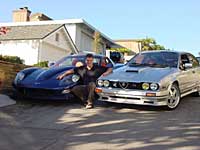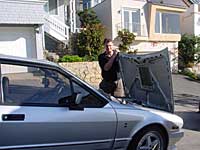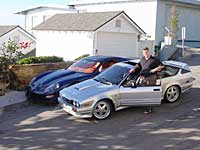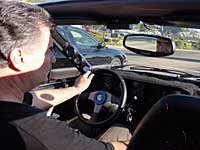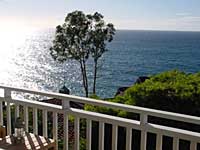| |||||||||
| The setting is a sidewalk restaurant in Laguna Beach CA’s Seaside Village. HMD (H. Martin de’Campo): Reeves I wanted to thank you for your time today and for meeting with us to talk about the legendary Twin Turbo Alfa Romeos you produced in the mid '80s. What are some of the points you hope to achieve here today? RC (Reeves Callaway): I believe the collector market will treat these cars with the respect they deserve. It’s time to update the Callaway Alfa Project HMD: I think that the last article, written by Stan Fisher in 1992 (for the Owner), was the very last one on the Callaway Alfa. RC: I remember looking it over. HMD: So how did the whole project start? How did Alfa Romeo and Callaway get involved with the whole project? RC: We had a short list of companies we wanted to work with out of Europe. Back then Callaway was really a small company doing some really creative and cutting-edge engineering designs. Don Black was the chief engineer at ARI and heard of some of the neat projects we had achieved. It was obvious he'd seen and admired the work we’d done with Volkswagen and other cars. Callaway wanted to have a relationship with a high-end European manufacturer. Don Black assured us that quality in the GTV6, particularly during its later stages of developmental maturity, was much better. The Maserati Biturbo had just arrived on to the scene and Alfa felt this was their territory: after all, they were the ones that had the Italian version of the well-styled, interesting two door sedan! Don called me and said: “We’re looking at the possibility of upgrading the GTV6 by increasing its performance and we understand that you can do the turbo engineering end of things, but can you do the emissions portion as well? Can you certify cars as compliant vehicles, meet all of our durability requirements and get them out the door?" HMD: So it sounds like they wanted you to do a lot more than just the engineering on a turbo system for the GTV6, is that fair to say? RC: Exactly! Alfa Romeo Inc. was an importer, and they were not allowed to modify any of its vehicles. They really wanted us to develop, engineer, install, produce, certify and get it out the door and into the public awareness. So, what they really said was, “Yes, we want your turbo system. But by the way, you also need to be good at PR.” They wanted to retake the marketplace from the Maserati Biturbo and to demonstrate that the Alfa GTV6 was better, faster and nicer looking. HMD: A lot of us thought that the Twin Turbo was created in response to BMW. You're saying that Alfa was actually more concerned about Maserati's threat than BMW's? RC: Alfa never thought BMW was a threat because they believed their cars were better than BMW. In Alfa Italy's eyes, ARI was confronted with a major marketing challenge. Remember, the industry is market-driven. Almost all our projects for clients are in response to a market that requires an engineering solution. The fact of the matter is, there aren’t many people who know how to increase the vehicle’s performance, and meet the emissions controls at the same time, all on a long-term basis … and do it in an economical manner. It's a very difficult riddle to solve. HMD: What happened next? Continued on Page 3. | |||||||||
| |||||||||
alfacentro • features • tech q&a • resources • classifieds • about us • announce list

